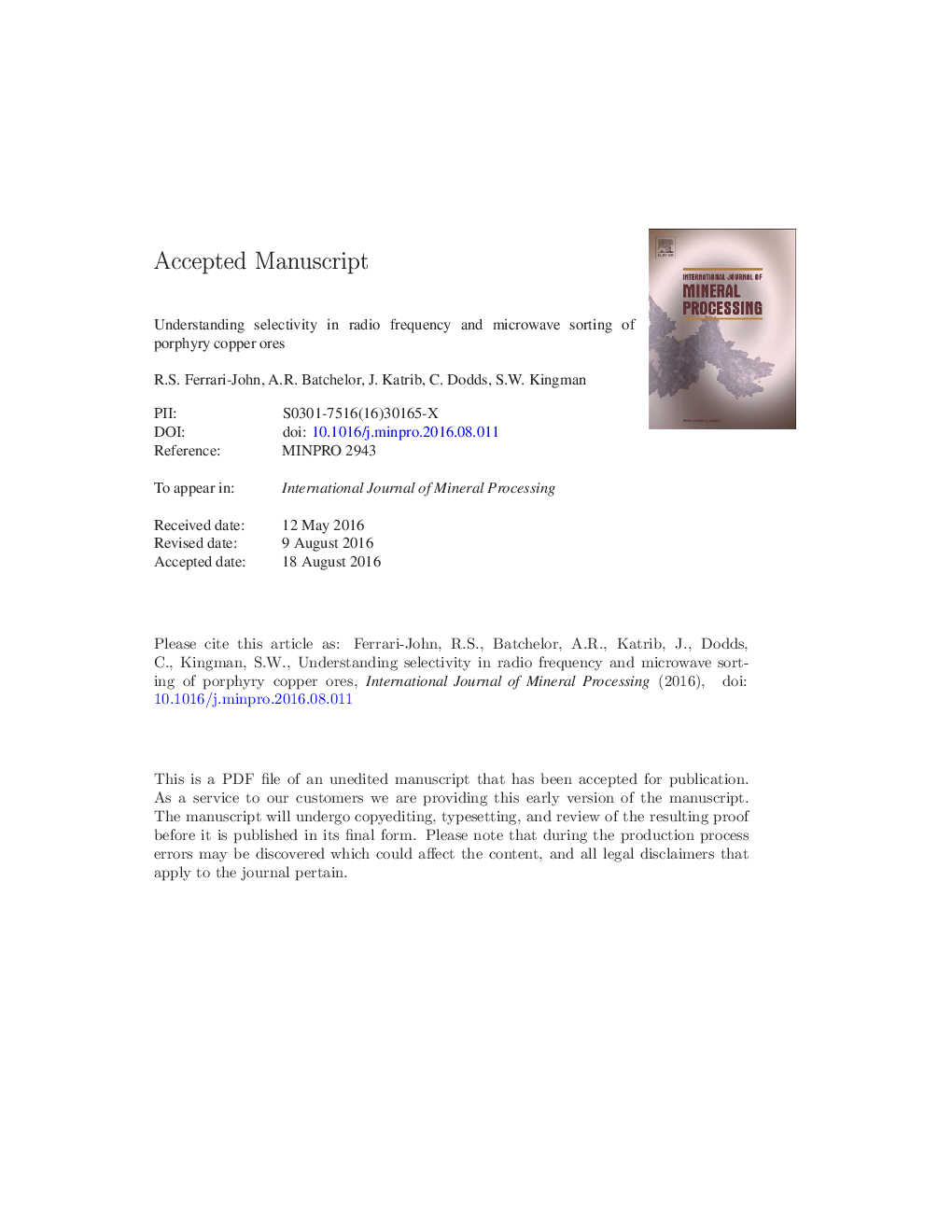| Article ID | Journal | Published Year | Pages | File Type |
|---|---|---|---|---|
| 4769467 | International Journal of Mineral Processing | 2016 | 24 Pages |
Abstract
Continuous high-throughput microwave treatment followed by infrared thermal imaging (MW-IR) has previously been shown to provide attractive separations for a number of porphyry copper ores, leading to rejection of a large proportion of barren fragments from ore-grade material or concentration of copper values from waste-grade material. However, the efficacy of the sorting process is reduced by the presence of hydrated clays and pyrite. Literature measurements have shown differences in the conductivity of pyrite and copper sulphides such as chalcopyrite at radio frequencies. In this work the potential of using radio frequency (RF) heating to exploit these differences and achieve improved selectivity between copper and iron sulphides, is investigated. For the first time a novel bulk materials handling and presentation method that facilitates even heating of angular ore fragments in parallel plate RF systems is discussed. The fragment-by-fragment thermal response of five ore samples under equivalent pilot MW-IR and RF-IR processing conditions is evaluated, showing that there is an increase in selectivity in the heating of hydrated clay minerals in RF compared to microwave. It is suggested, again for the first time, that selectivity in the microwave processing of ores containing semi-conducting minerals is due predominantly to magnetic absorption (induction heating) caused by eddy currents associated with the magnetic field component of electromagnetic energy. In radio frequency processing, where electric field is the dominant component, heating of semi-conducting minerals is limited by the electric field screening effect. This effect is demonstrated using synthetic fragments. Thermal response profiles of synthetic fragments show that approximately 2.5 times the mass of sulphide minerals to hydrated clay minerals would result in an equal temperature increase for microwave heated fragments in which the microwave-heating minerals are evenly disseminated throughout the matrix. This understanding provides the foundations for development of models incorporating different thermal responses for individual heated phases, alongside other textural and treatment variables, that can be used to predict how close to intrinsic sortability ores will perform in MW-IR and RF-IR without the need for extensive processing trials.
Related Topics
Physical Sciences and Engineering
Chemical Engineering
Chemical Engineering (General)
Authors
R.S. Ferrari-John, A.R. Batchelor, J. Katrib, C. Dodds, S.W. Kingman,
